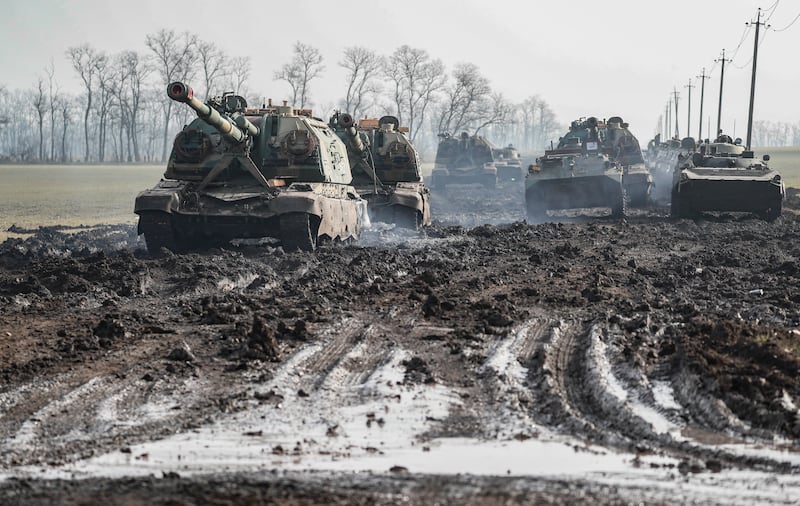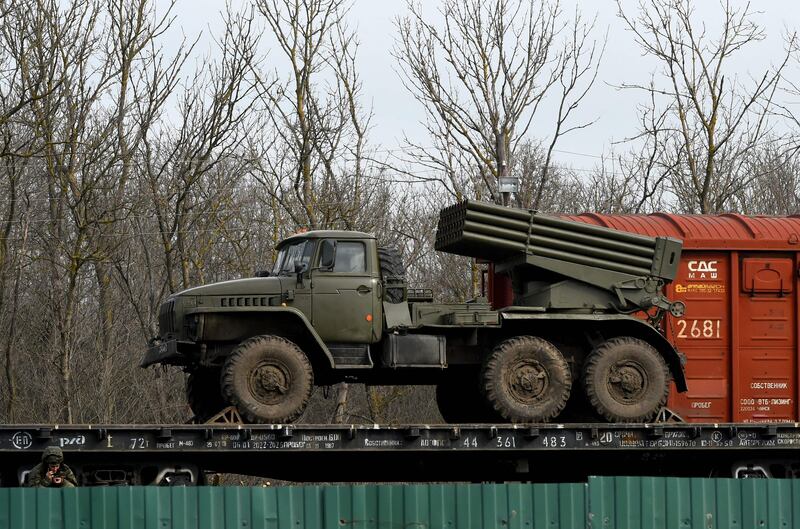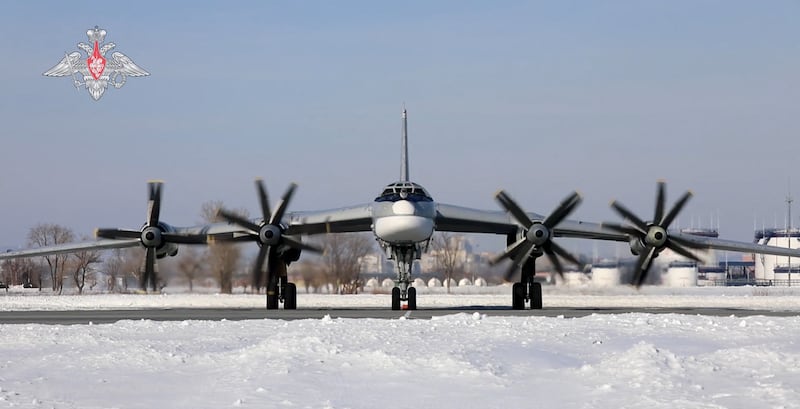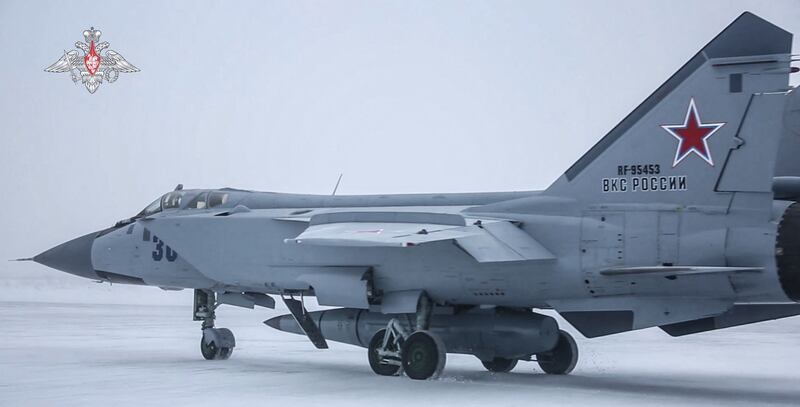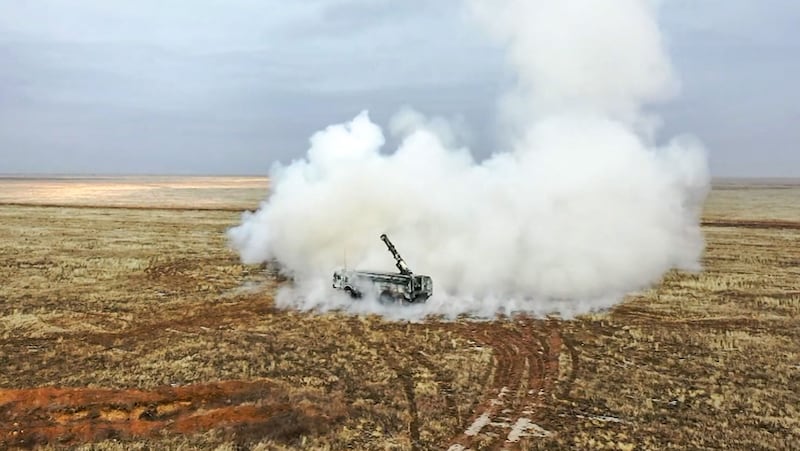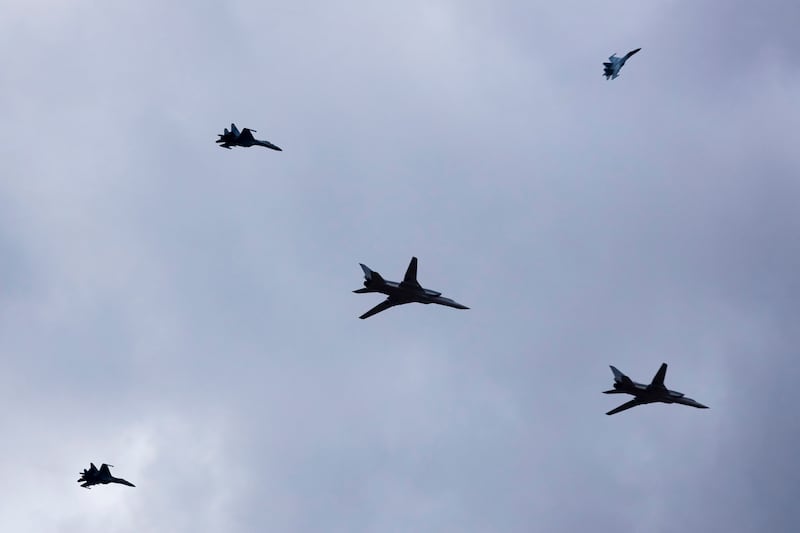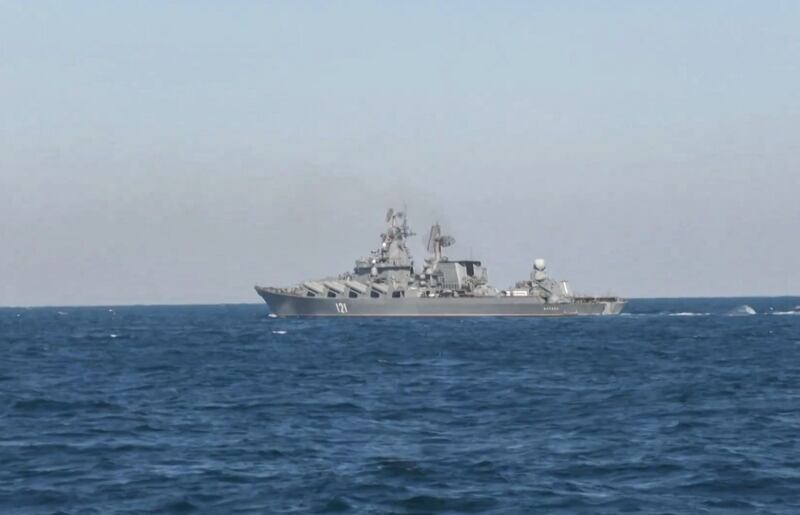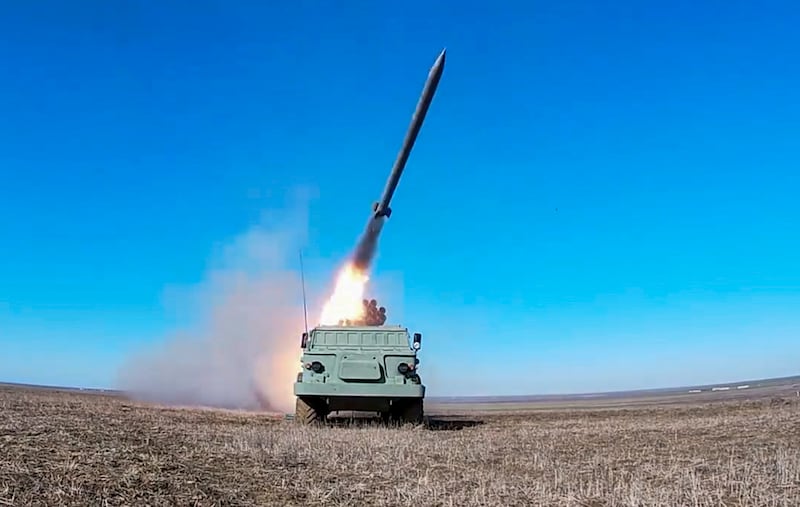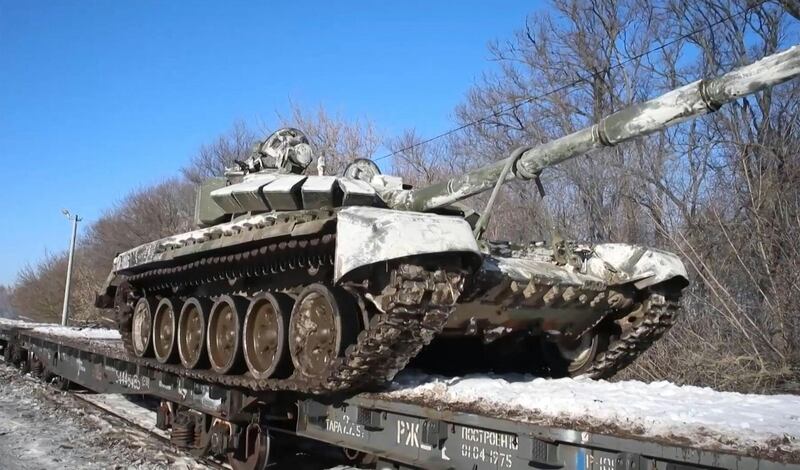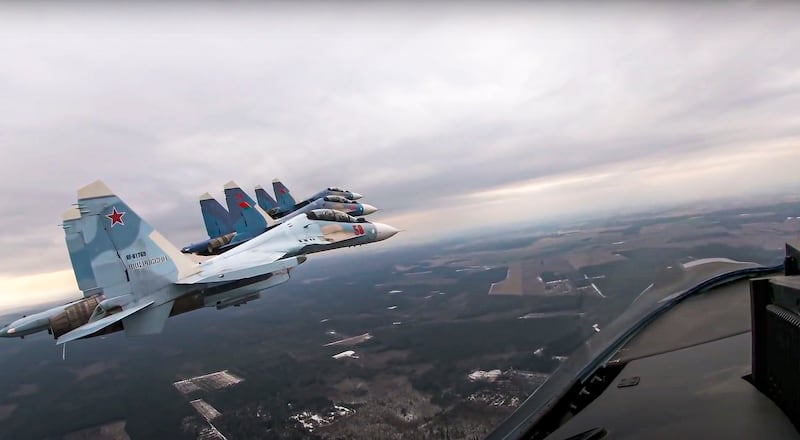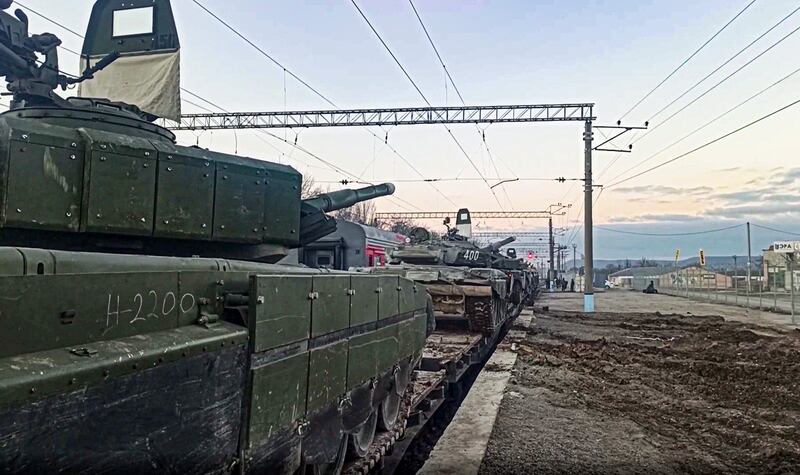After 10 months, Russia’s war in Ukraine grinds on despite Moscow’s numerical superiority and in some cases, better weapons.
“What the Ukrainians have done will be studied at war colleges for a long time,” says James L Regens, founding director of the University of Oklahoma Centre for Intelligence and National Security.
But Ukraine’s ability to hold back a materially superior adversary is not unique.
Libya's failed invasion of Chad in 1987 and the Iraqi collapse in Mosul in 2014 are two occasions on which an army was defeated by a lightly armed enemy, proving that superior numbers and weapons alone are not enough to guarantee victory.
Experts tell The National the reasons for these defeats almost always come down to dysfunctional political control of the military.
Chain of command
“Everything starts with leadership,” says Robert K Brigham, a military historian at Vassar College, New York.
“If the chain of command is not reliable, if the enlisted men don't feel somehow connected to the leadership, then there's always going to be structural problems that can never really be overcome.”
In Nato and its allies, such as Ukraine, ultimate command lies at the very top, but emphasis in the chain of command is placed on the initiative of small unit commanders at the sharp end of battle, freeing them from micromanaging generals far from the front line.
Junior ranks must feel “comfortable exercising reasonable initiative without fear of reprisal from their chain of command”, one US officer wrote last year.
By contrast, many non-Nato armies place strong emphasis on strictly managing their forces from the highest level of command, which can slow down the flow of vital information and hinder initiative.
Some of the worst military defeats involved generals who were chosen by the elite, picked for loyalty rather than competence. The independence of smaller unit commanders on the front lines in these tightly controlled situations is limited.
“Tasks requiring resolution, which in the West would be resolved at much lower levels, get passed up the chain for decision,” a Russian officer said recently.
This can lead to inflexible armies faced with rapidly changing situations. Decisions have to be made quickly. An officer forced to wait for a general’s command might find the guidance comes far too late.
“Those who fail are usually replaced or threatened with punishment. Far from incentivising success, this often leads to dishonest reporting,” a report on the Ukraine war by UK think tank RUSI recently said.
In Russia, non-commissioned officers “are not empowered at all”.
“Their junior officers aren't empowered. It's a very top-down thing, as is their political system,” says Mr Regens.
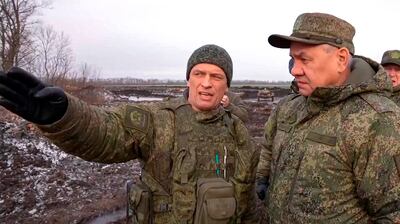
This relationship between the government and the military goes a long way to explain Russia's ongoing setbacks despite major advantages.
According to RUSI, Russia initially had a 12 to one numerical advantage on the Kyiv front. Russia also had an advantage in the air of at least three to one, as well as better air-to-air missiles.
Ukraine received a surge in Nato support before February, but Ukraine’s generals say it was their own artillery that did the most damage to the initial Russian thrust towards Kyiv, pushing them back from their initial gains in spring, shown below.
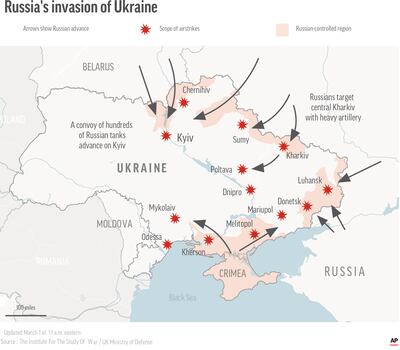
A supply of high-tech, US Himars missile launchers in June helped blunt Russia's artillery advantage, but Moscow still has the edge.
A Nato supply of howitzers didn’t materialise until spring, but remains a fraction of Ukraine’s artillery force. Likewise, anti-aircraft weaponry supplied could only threaten Russia's air force at lower altitudes.
'Coup proofing' to the end
“The Ukrainians are demonstrating that Ukraine is a European country. They're structuring their military, subordinate to civilian control, but actually having a military that's functional, as opposed to coup-proofed,” says Mr Regens.
“Coup proofing” is where generals are chosen for political loyalty over ability, to stop military plots against the government.
According to Mr Brigham, unqualified but loyal generals are more likely to promote less able officers at lower ranks — spreading the dysfunction. Military experts call this unchecked military power “praetorianism” after the immense political power of the Roman military.
In the praetorian system, the military empowers and serves itself more than the nation, neglecting its duty to win wars.
“If you're not doing anything other than domestic repression, you're not embodying the nation. To win, it better be a real fast war, against a relatively inept opponent,” Mr Regens says.
What is the Patriot missile system the US is sending to Ukraine?
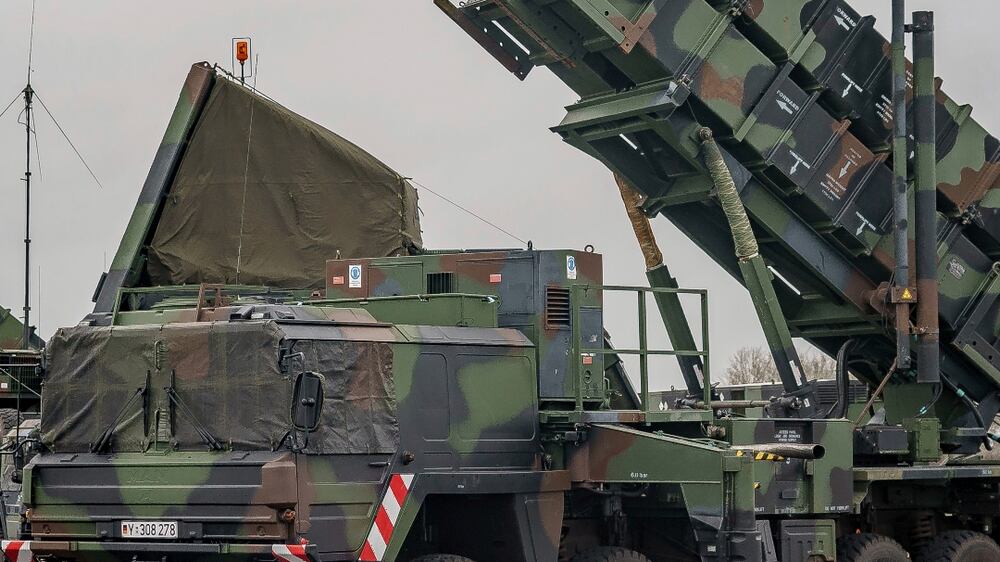
Mr Brigham also points to the idea of "palace guardism," where the military exists simply to protect the elite. An example was America’s ally South Vietnam, where successive dictators prioritised coup-proofing.
Loyal but unqualified South Vietnamese generals lacked the experience needed to plan complex military operations, organising fuel, food and ammunition for tens of thousands of troops, co-ordinating different branches of the forces night and day, while planning against highly motivated communists.
This was on display at the 1963 battle of Ap Bac, when thousands of South Vietnamese soldiers with artillery, armoured vehicles and air power, were held off by a lightly equipped force thought to have numbered no more than 400 communists.
“There is corruption at the top because with President [Ngo Dinh] Diem especially you got promoted by loyalty, not necessarily merit. There's a lot of coup-proofing going on. At Ap Bac, he withheld some of the divisions that probably would have made a difference that were kept for coup protection in Saigon,” says Mr Brigham.
A decade later, as the US left Vietnam, little had changed.
By the early 1970s South Vietnam had the fourth largest air force in the world, as well as helicopter-borne troops and masses of tanks. But coup-proofing persisted and they lacked the skilled generals that would have enabled them to co-ordinate this might against the communists.
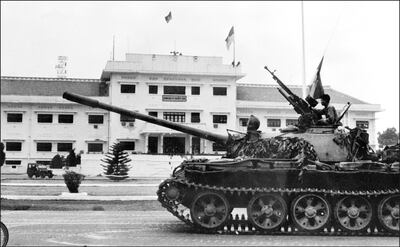
Military disasters of other authoritarian regimes have been very similar.
Muammar Qaddafi’s hand-picked generals who invaded Chad in 1987 were defeated by lightly armed Chadians in fleets of Toyotas. Chad defeated the inflexible Libyan force, which was repeatedly surrounded and ambushed by a more mobile enemy, despite Libya possessing air power, heavy artillery and tanks — none of which the Chadians had.
In 1982, when Britain embarked to recapture the Falkland Islands, Argentinian dictator Leopoldo Galtieri gave a loyal but inexperienced general Mario Menendez the job of protecting the islands.
Despite a roughly equal-sized defending force and a five to one superiority in aircraft, Gen Menendez failed to co-ordinate the full forces available to him, missing opportunities to smash British forces before they could land enough troops on the islands.
More recently, former Iraqi prime minister Nouri Al Maliki watched in horror as a small force of ISIS terrorists overwhelmed Iraqi forces around the city of Mosul in the summer of 2014. Lightly armed ISIS fighters seized about a third of Iraq, despite facing tens of thousands of men with modern, US-made M1A1 tanks, GPS-guided artillery shells and a small air force.
Mr Al Maliki appointed loyal but corrupt generals who ran their army into the ground before ISIS began its offensive.
'Now go and fight'
In all of the cases above, politically loyal generals were accused of rampant corruption.
This, Mr Brigham says, thoroughly undermined their forces. It also undermined vital tasks such as ensuring complex weapons were adequately maintained and ready for battle.
“It's not just equipment,” Mr Brigham says. “Obviously, the Ukrainians are getting high-tech equipment, but it's about the ability to absorb it, to learn, to have the logistical systems in place. You can't just throw equipment at a bunch of men and go, ‘there you go, right, now go and fight’.”


